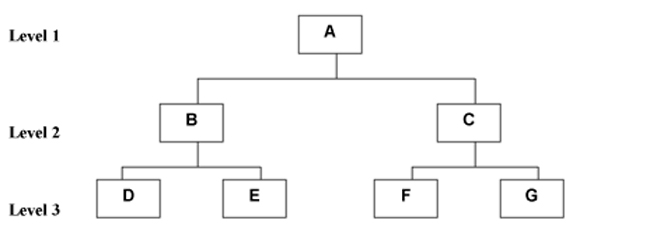Effective reading requires sufficient time and efficient strategies for working with the text. Strengthening your reading skills will lead to better comprehension and mastery of the material. Start by examining the processes that occur before, during, and after reading.
A. Before Reading
Before beginning to read a chapter, set the mood, survey the chapter, focus your attention, develop an anchor, and budget your time and effort:
1. Before beginning a reading assignment, set the mood for your reading. Develop clear goals and detailed plans for your reading, and work hard to sustain your efforts. Establish challenging goals and stick to them. For example, scan a chapter to determine its structure, plan to mark the text for main topics and repeatable categories, and then question, predict, elaborate, and summarize. If you imagine yourself establishing and following a reading plan, then your chances of carrying it through increase. Prepare yourself for reading actively with sustained effort.
2. Survey the chapter before beginning to read. Determine the text’s structure by examining its organizing structure (hierarchy, sequence, matrix), and the ingredients of that structure (topics, structure, table of contents, headings, overviews and summaries, and representations). By surveying these clues, you can both organize and select the information contained within that chapter.
3. Focus your attention by noting highlighted material, objectives, and questions in the text. Material which appears in boldface or italics indicates new or important information (much like the boldface phrases in this section). Objectives usually appear at the beginning of a chapter, and, by noting them, you can use them to guide your attention as you read. Questions, which are often more specific than objectives, may appear at the beginning, middle, or end of a chapter, but they, too, focus your attention on main points contained within the material. Both objectives and questions can serve as jumping-off points for additional questions and “tests” for you to determine your understanding of the material.
4. The next step in pre-reading is to develop an anchor. By using the previous pre-reading techniques, you can determine the content of the chapters and then connect the information to previous knowledge. The text may contain application questions or scenarios, which are the author’s anchors for the reader. In addition, the instructor of the class may establish anchors by indicating which skills students will need to demonstrate on an upcoming assignment or test.
5. The final step in preparing to read is to budget time and effort. You can predict the amount of time you’ll need to read the material by looking at number of pages, density and difficulty of text, and number of graphics. Material that contains a lot of information in a short space will take more time to read, and you should estimate the amount of time needed and set your goals accordingly.
B. During Reading
Effective reading requires active reader participation, not just scanning the words in the hopes that the information will sink in. While reading, you should mark text and practice comprehension strategies:
1. Mark the text in order to find and highlight the chapter’s structure, ingredients, and important details. Accurate text markings can be quickly converted to representations (concept maps, hierarchies, sequence, matrix). Following is a list of text markings that you can use to highlight a text’s structure and essential ingredients:

Repeatable categories are categories that are repeated for each topic in a section. Sometimes repeatable categories are obvious in the text, but often you must determine them for yourself. Identifying them takes practice, but when you take the time to do so, you will understand the structure of the passage and more easily connect the information to previous knowledge. Once you have marked your text using this or a similar system, you can easily transfer the information into a pictorial representation of the material.
2. Use comprehension strategies:
- raise questions
- make predictions
- organize ideas
- generate elaborations
- create summaries
- continually monitor understanding and strategy use.
Questions such as who, what, where, when, why, and how help you engage with the text and establish connections with previous information. Predicting encourages you to think ahead and then to confirm or disconfirm your predictions as you read. By determining the relations and patterns in a text, thus understanding the text’s organization, you increase your comprehension.
Elaborations are examples and comparisons that are not present in the text; you can use them, however, to help make connections with previous knowledge, thus establishing an anchor and increasing comprehension. While authors include their own examples within the text, you establish your own in order to create a context for your reading. Making comparisons also allows you to connect familiar concepts with the new ones. Effective readers think critically, constantly evaluating and questioning ideas as they come across them.
Writing summaries increases your comprehension and allows you to assess whether or not you comprehend the information. Throughout the reading process, you need to monitor your comprehension and the strategies you’re using for reading and adjust them accordingly.
C. After Reading
Once you have completed your reading of a text, generate representations and a final summary and compile questions:
1. You should generate representations throughout your reading but then establish a complete and improved representation when you’ve finished reading. A final representation should incorporate any missing details, more clearly establish the relationship between main ideas, and reorganize repeatable categories. In addition, you might construct representations that combine previous representations with the current ones.
A discussion of pictorial representations follows:
PICTORIAL REPRESENTATIONS
Information presented in a linear fashion (outlines) does not indicate either the relationship between segments or the relative importance of each part. If you can translate linear information into a pictorial representation (concept maps, hierarchies, sequences, matrices), then you will be able to more easily discern connections and, in turn, more easily understand the concepts. Each representation serves its own purpose, and you can determine which ones are more appropriate for whatever concepts you’re working on. Some material can be best presented with a combination of representation types.
CONCEPT MAPS
A concept map represents information in a hierarchy with the main topic appearing in the center. Related ideas then radiate out from the center or are listed below the center. The concept map can take many forms depending upon the information and its implied hierarchical relationships. Mapping works particularly well for brainstorming or for getting organized. Following is one example of a concept map:

HIERARCHIES
A hierarchy organizes information into groups based on their relative importance to each other, with general ideas appearing above specific ideas. Information is grouped on levels, with similar information appearing on the same level. Hierarchies show types, parts, or characteristics. Hierarchies work well for the sciences. Following is a model of a hierarchy:

SEQUENCES
A sequence organizes information chronologically and indicates from left to right the order of steps, phases, events, or stages. Arrows appear between items to connect them in the correct time order. Sequences are used most frequently in history and literature. A model sequence follows:

MATRICES
A matrix develops out of a hierarchy or sequence or both. Matrices consist of repeatable categories, topics, and details. Topics, which are the superordinate or subordinate ideas in a hierarchy or the steps in a sequence, are at the top of the matrix. Repeatable categories appear along the left-hand side of the matrix. Details appear at the intersection of each topic category and repeatable category. Matrices display connections (comparisons) within and across topics and display the levels, groups, and order relations found in hierarchies and sequences. A matrix model follows:
|
|
Topic |
Topic |
Topic |
Topic |
|
Repeatable Category |
Detail |
Detail |
Detail |
Detail |
|
Repeatable Category |
Detail |
Detail |
Detail |
Detail |
|
Repeatable Category |
Detail |
Detail |
Detail |
Detail |
Translating textbook information into a representation increases learning and makes studying more efficient. Representations allow you to see the “big picture” and to understand the context for what you’re learning.
2. When you generate a final summary, you can assess whether or not you have identified the chapter’s important ideas and the connections between them. You must be sure to include only essential details as you might otherwise get bogged down in information. A summary is also very helpful for studying.
3. Compile a list of questions based on questions you asked during pre-reading which were not answered through reading of the text and based on gaps you find in your representations. Answering those questions allows you to complete the “puzzle” of the text and also to extend your mastery of the material.
Alternate Reading Strategies
Several systems have been developed for studying textbooks. All are a variation of the study steps previously outlined. You can select one or tailor one to fit your own use or even recreate a system that fits your personality or preference. Here are three possible systems for you to follow:
|
3R's |
OK5R |
SQ3R |
|
Read |
Overview |
Survey |
|
Record |
Key Ideas |
Question |
|
Recite |
Read |
Read |
|
|
Record |
Recite |
|
|
Recite |
Review |
|
|
Review |
|
|
|
Reflect |
|
The key throughout is for you to develop a system that works best for you and to use it regularly so that it becomes habit.
Summary
If you are using passive reading strategies, such as rereading and highlighting, you would benefit from developing more active reading strategies. When you use the strategies listed here, you will more readily comprehend the information, connect it to previous knowledge, and master the material.
CREDIT:
Adapted from:
Kiewra, Kenneth A. and Nelson F. Dubois. Learning to Learn: Making the Transition from Student to Life-Long Learner. Boston: Allyn and Bacon, 1998.
Pauk, Walter. How to Study in College. New York: Houghton Mifflin, Co., 1974.

